- Factors Affecting Calibrachoa Seed Germination
- 1. Temperature
- 2. Moisture
- 3. Light
- 4. Soil pH
- 5. Seed Quality
- 6. Stratification
- Temperature and Moisture Levels
- Temperature
- Moisture Levels
- Tips for Success
- Soil Type and Preparation
- Light and Darkness Requirements
- Stratification and Scarification Techniques
- Stratification
- Scarification
- Seed Quality and Viability
- 1. Seed Source:
- 2. Seed Age:
- 3. Seed Storage:
- 4. Seed Dormancy:
- 5. Seed Testing:
- 6. Seed Treatment:
- 7. Seed Viability:
- Seed Treatment and Pre-Sowing Techniques
- Seed Scarification
- Cold Stratification
- Seed Soaking
- Seed Priming
- Protective Coating
- Pest and Disease Management
- Pests
- Diseases
- Integrated Pest Management (IPM)
- Timing and Seasonality for Sowing
- 1. Ideal Sowing Time
- 2. Temperature Requirements
- 3. Day Length Considerations
- 4. Outdoor Sowing vs. Indoor Sowing
- 5. Recommended Germination Temperature
- Questions and Answers:
- What is calibrachoa? How do the seeds germinate?
- Can calibrachoa seeds germinate in darkness?
- What is the ideal temperature for calibrachoa seed germination?
- How long does it take for calibrachoa seeds to germinate?
- What are the common factors that affect calibrachoa seed germination?
- Videos: Calibrachoa From Cuttings
Calibrachoa is a popular flowering plant that is native to South America. It is known for its vibrant and abundant blooms, and is commonly used in hanging baskets, containers, and garden borders. While calibrachoa is typically propagated using cuttings, it is also possible to grow it from seeds. However, the germination process for calibrachoa seeds can be somewhat challenging, as it is influenced by several factors.
One of the key factors that affects calibrachoa seed germination is temperature. Calibrachoa seeds require warm temperatures to germinate, with an optimal range of 70 to 80 degrees Fahrenheit (21 to 27 degrees Celsius). Therefore, it is important to provide a consistently warm environment for the seeds to encourage successful germination. Additionally, maintaining a steady temperature throughout the germination period is crucial, as fluctuating temperatures can negatively impact the germination process.
Another factor that plays a role in calibrachoa seed germination is moisture. Calibrachoa seeds need to be kept consistently moist during the germination process. However, it is important to strike a balance and avoid over-watering the seeds, as excessive moisture can lead to rotting and fungal diseases. A well-draining soil mix or seed-starting medium is recommended to prevent waterlogged conditions.
Light is also an important factor for calibrachoa seed germination. Unlike some other plant species, calibrachoa seeds require light to germinate. Therefore, they should be planted on the soil surface and not covered with additional soil. Proper exposure to light will help stimulate the germination process and promote healthy seedling development.
By considering these common factors that affect calibrachoa seed germination, gardeners can increase their chances of successfully growing this beautiful plant from seeds. With proper temperature, moisture, and light conditions, calibrachoa seeds can thrive and develop into vibrant, blooming plants that will bring joy to any garden or landscape.
Factors Affecting Calibrachoa Seed Germination
The germination of calibrachoa seeds depends on various factors that can either facilitate or hinder the process. Understanding these factors can help gardeners improve the success rate of germinating calibrachoa seeds.
1. Temperature
Temperature plays a crucial role in calibrachoa seed germination. Generally, calibrachoa seeds require a temperature range of 70-75°F (21-24°C) for optimal germination. Cooler temperatures can significantly slow down the germination process, while excessively high temperatures can lead to poor germination rates.
2. Moisture
Moisture is another crucial factor for calibrachoa seed germination. It is important to keep the seed-starting mix consistently moist, but not saturated, to provide the necessary moisture for the seeds to germinate. Inadequate moisture can cause the seeds to dry out and fail to germinate.
3. Light
Calibrachoa seeds require light for germination. Unlike some other seeds, calibrachoa seeds are light-sensitive and need exposure to light for successful germination. It is therefore important to sow the seeds on the surface of the growing medium and not bury them to ensure they receive adequate light.
4. Soil pH
The soil pH can affect the germination of calibrachoa seeds. Calibrachoa prefers slightly acidic to neutral soil with a pH range of 5.5-7.0. Soils that are too acidic or alkaline can create unfavorable conditions for germination and inhibit seedling development.
5. Seed Quality
The quality of the calibrachoa seeds can also influence germination. It is important to use fresh, viable seeds from a reputable source. Older or low-quality seeds may have reduced germination rates and lower overall vigor. Seeds that are properly stored in cool and dry conditions have the best chance of germinating successfully.
6. Stratification
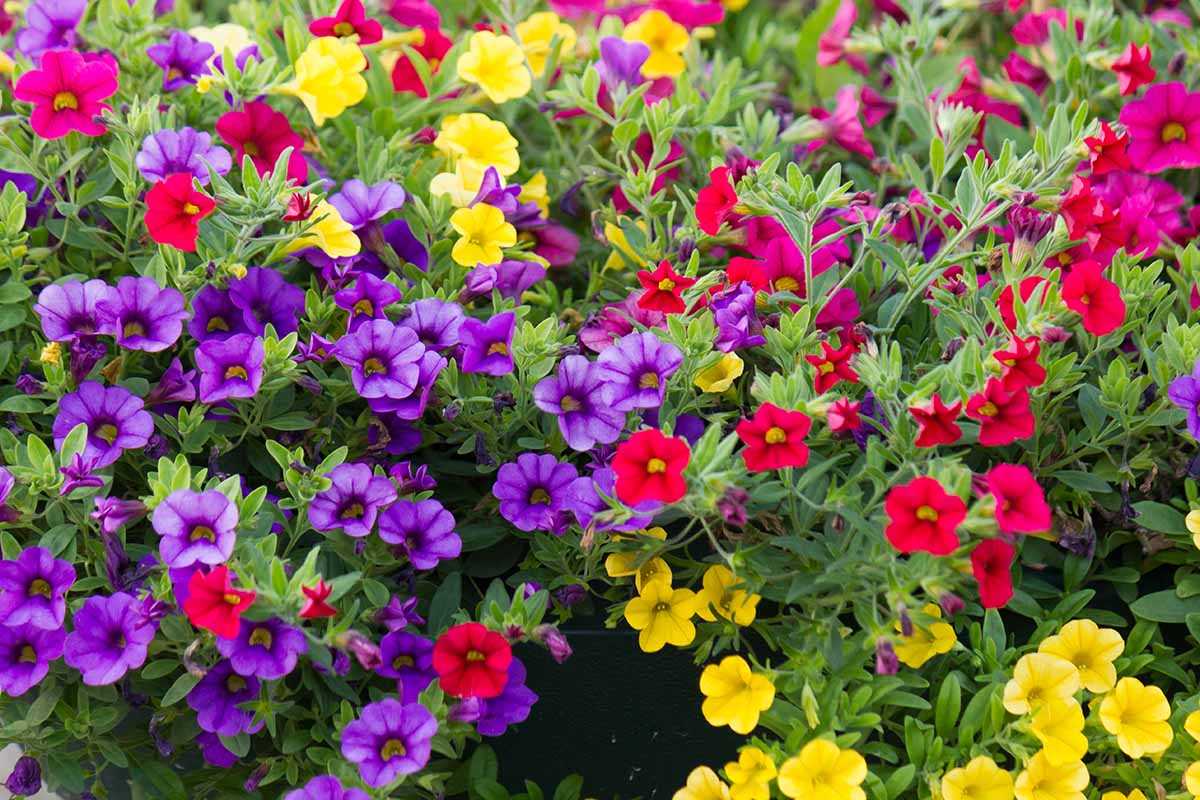
Some cultivars of calibrachoa seeds require a cold stratification period to break dormancy and promote germination. This process involves chilling the seeds in the refrigerator for a specific period before sowing. It is essential to check the germination requirements of the specific calibrachoa cultivar being grown.
By considering these factors and providing the appropriate conditions, gardeners can maximize the germination success of calibrachoa seeds and ensure healthy seedlings for their gardens.
Temperature and Moisture Levels
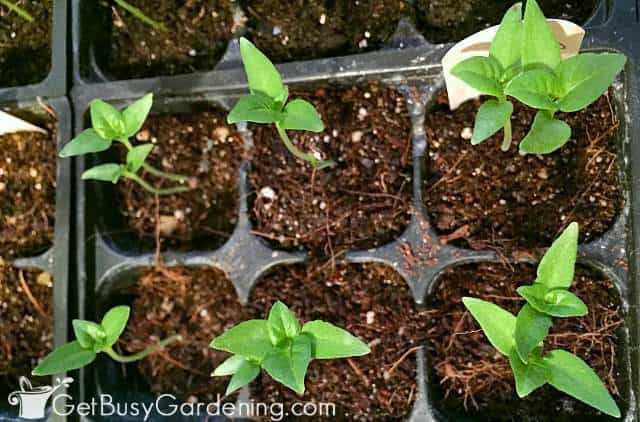
Achieving the optimal temperature and moisture levels is essential for the successful germination of calibrachoa seeds. These factors greatly influence the seed’s ability to sprout and grow into healthy seedlings.
Temperature
Calibrachoa seeds require a warm and consistent temperature to germinate effectively. The ideal temperature range for germination is between 70°F and 75°F (21°C to 24°C). Temperatures below this range can slow down or inhibit germination. It is important to maintain a constant temperature throughout the germination process.
Using a heating mat or placing the seeds in a warm location, such as near a heater or radiator, can help maintain the optimal temperature for germination.
Moisture Levels
Proper moisture levels are crucial for calibrachoa seed germination. The seeds need to be kept consistently moist, but not overly saturated, to encourage sprouting. If the soil or growing medium is too dry, the seeds may fail to germinate. On the other hand, excess moisture can lead to rotting or fungal diseases.
It is recommended to water the seeds and growing medium gently to avoid displacing or burying the tiny seeds. Using a misting bottle or a fine sprinkler can help ensure even moisture distribution without causing damage to the seeds.
Monitoring the moisture levels regularly is important. The top layer of soil or growing medium should be kept moist, but not soaked. If the soil feels dry to the touch, it is time to water the seeds.
Additionally, covering the container or tray with a clear plastic wrap or a humidity dome can help retain moisture and create a more favorable environment for germination.
Tips for Success
- Use a thermometer to monitor the temperature and ensure it stays within the recommended range.
- Check the moisture levels regularly and adjust watering as needed to maintain consistent moisture.
- Avoid overwatering or allowing the soil to dry out completely. Consistent, moderate moisture is key.
- Consider using bottom-heat propagation mats to provide a constant source of warmth for the seeds.
- Keep the germination area well-ventilated to prevent the build-up of excess humidity.
By paying careful attention to temperature and moisture levels, you can significantly increase the chances of successful calibrachoa seed germination. Remember to be patient, as some seeds may take longer to germinate than others.
Soil Type and Preparation
The type of soil used for germination plays a crucial role in the success of calibrachoa seeds. Calibrachoa seeds require well-drained soil that is rich in organic matter. The soil pH should be slightly acidic, with a range of 5.5 to 6.5, as calibrachoa prefers slightly acidic conditions.
Prior to sowing the seeds, it is important to prepare the soil to create optimal conditions for germination. Here are some steps to follow:
- Remove any debris: Clear the area of any rocks, sticks, or weeds that may interfere with seed germination.
- Loosen the soil: Use a garden fork or hoe to loosen the top layer of soil, creating a loose and crumbly texture. This allows the seeds to establish root systems more easily.
- Add organic matter: Incorporate compost or well-rotted manure into the soil to improve fertility and drainage. This also adds necessary nutrients for the seedlings.
- Level the soil: Smooth out the surface of the soil, removing any large clumps or uneven areas. This provides a more even and stable base for the seeds.
- Moisten the soil: Water the soil lightly to ensure it is moist but not waterlogged. This creates a favorable environment for seed germination.
Once the soil is prepared, it is ready for seed sowing. Following these soil preparation steps can help increase the germination success rate of calibrachoa seeds.
Light and Darkness Requirements
Calibrachoa seeds have specific light and darkness requirements for optimal germination. The seeds require a period of darkness followed by a period of light to initiate germination.
Different species and varieties of Calibrachoa may have slightly different light and darkness requirements, so it is important to research and follow the specific instructions for the particular seeds you are planting.
Generally, Calibrachoa seeds should be sown on the surface of the growing medium and lightly covered with a thin layer of soil or vermiculite. After sowing, the seeds should be kept in darkness for a specific time period, usually ranging from 1 to 3 days.
After the period of darkness, the seeds should be exposed to light. Ideally, they should receive bright, indirect light rather than direct sunlight, which may be too intense. A fluorescent grow light or a bright windowsill can provide suitable light conditions for germination.
It is important to maintain a consistent light and darkness schedule during the germination process. Consistent exposure to the appropriate light and darkness conditions will help ensure successful germination and seedling growth.
Keep in mind that the specific light and darkness requirements may vary depending on the species or variety of Calibrachoa seeds you are planting. Always refer to the seed packet or consult with a trusted source for accurate and up-to-date information.
Stratification and Scarification Techniques
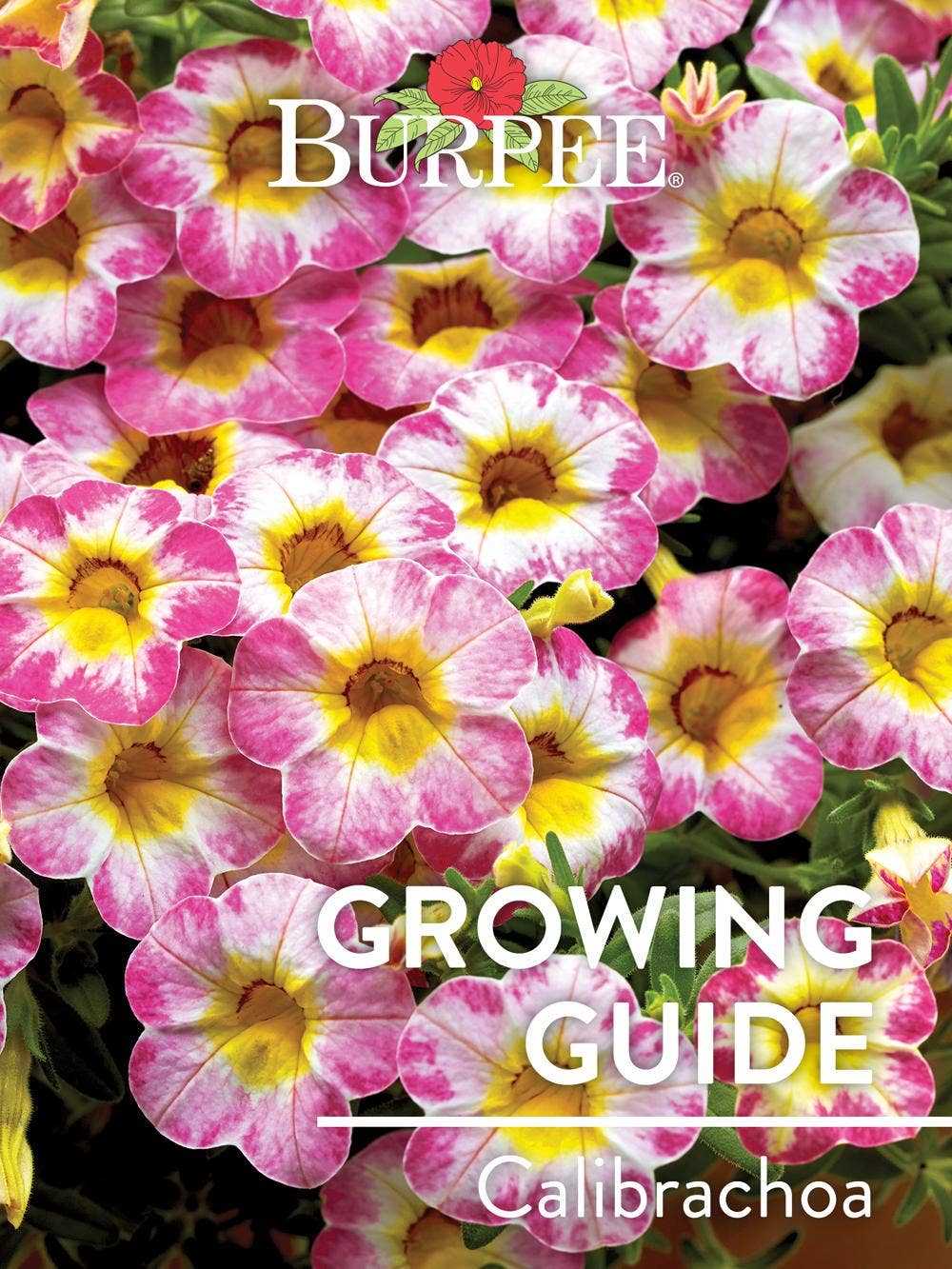
Stratification and scarification techniques are commonly used to improve the germination of calibrachoa seeds. These techniques help break seed dormancy and promote a higher percentage of successful seed germination.
Stratification
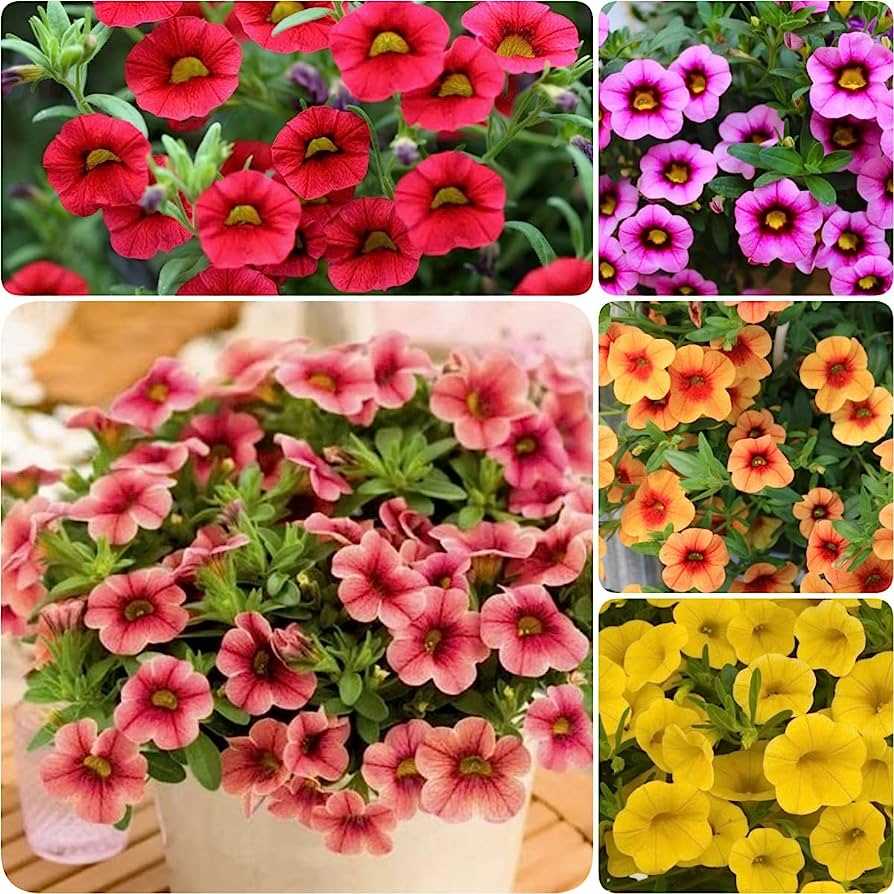
Stratification is a process that involves subjecting the seeds to a period of cold and moist conditions. This mimics the natural winter conditions that the seeds would experience in their natural habitat. The cold temperature helps to break down the seed coat, allowing water and oxygen to penetrate the seed and stimulate germination. The moisture also helps to soften the seed coat and initiate the germination process.
To stratify calibrachoa seeds, you can follow these steps:
- Place the seeds in a container or ziplock bag.
- Add moist vermiculite or peat moss to the container, ensuring that the seeds are evenly distributed and surrounded by the moist medium.
- Seal the container or bag and place it in the refrigerator for a period of 4-6 weeks.
- Check the seeds regularly to ensure that the medium remains moist.
- After the stratification period, remove the seeds from the refrigerator and allow them to warm up to room temperature before sowing.
Scarification
Scarification is a process that involves breaking or weakening the hard seed coat of calibrachoa seeds. This process is necessary if the seed coat is too thick or hard, preventing water and oxygen from penetrating the seed and inducing germination. Scarification can be achieved using different methods, including physical abrasion and chemical treatment.
Physical scarification methods include:
- Rubbing the seeds with sandpaper or a file to create small scratches on the seed coat.
- Nicking the seed coat with a sharp knife or scalpel.
- Applying light pressure using a vice or pliers to crack the seed coat.
Chemical scarification methods involve treating the seeds with chemicals that help soften the seed coat. Some commonly used chemicals for seed scarification include sulfuric acid, hydrogen peroxide, or a mixture of water and bleach. It is important to follow the specific instructions and precautions when using chemical scarification methods.
After scarification, it is recommended to rinse the seeds thoroughly with water to remove any remaining chemicals before sowing.
Using stratification and scarification techniques can significantly improve the germination success rate of calibrachoa seeds. However, it is important to note that these techniques may not be necessary for all calibrachoa varieties, as some seeds may naturally have a thinner or softer seed coat that allows for easier germination.
Seed Quality and Viability
Seed quality and viability are key factors that affect the germination of calibrachoa seeds. It is important to ensure that the seeds being used are of high quality and have good viability in order to achieve successful germination rates. Here are some important factors to consider when evaluating the quality and viability of calibrachoa seeds:
1. Seed Source:
The source of the seeds plays a crucial role in their quality and viability. It is recommended to obtain seeds from reputable suppliers or breeders who have a reputation for providing high-quality seeds. This helps to ensure that you are starting with seeds that have been properly stored and tested for viability.
2. Seed Age:
Fresh seeds generally have higher viability than old seeds. As seeds age, their viability decreases, making it harder for them to germinate. It is best to use seeds that have been harvested within the past year to ensure maximum germination rates.
3. Seed Storage:
The way seeds are stored can greatly impact their viability. Calibrachoa seeds should be stored in a cool and dry place, preferably in a sealed container or envelope to protect them from moisture and pests. Proper storage helps to maintain the viability of the seeds over time.
4. Seed Dormancy:
Some calibrachoa seeds may have dormancy factors that need to be broken in order to promote germination. This can be achieved through techniques such as scarification (mechanical or chemical), stratification (exposing seeds to cold temperatures), or soaking in water. Understanding the specific dormancy requirements of calibrachoa seeds can help improve germination rates.
5. Seed Testing:
Seed testing is an important step in evaluating seed quality and viability. Seed testing can determine the germination percentage, vigor, and any abnormalities or diseases present in the seeds. It is recommended to have seeds tested by a professional seed testing laboratory to ensure accurate results.
6. Seed Treatment:
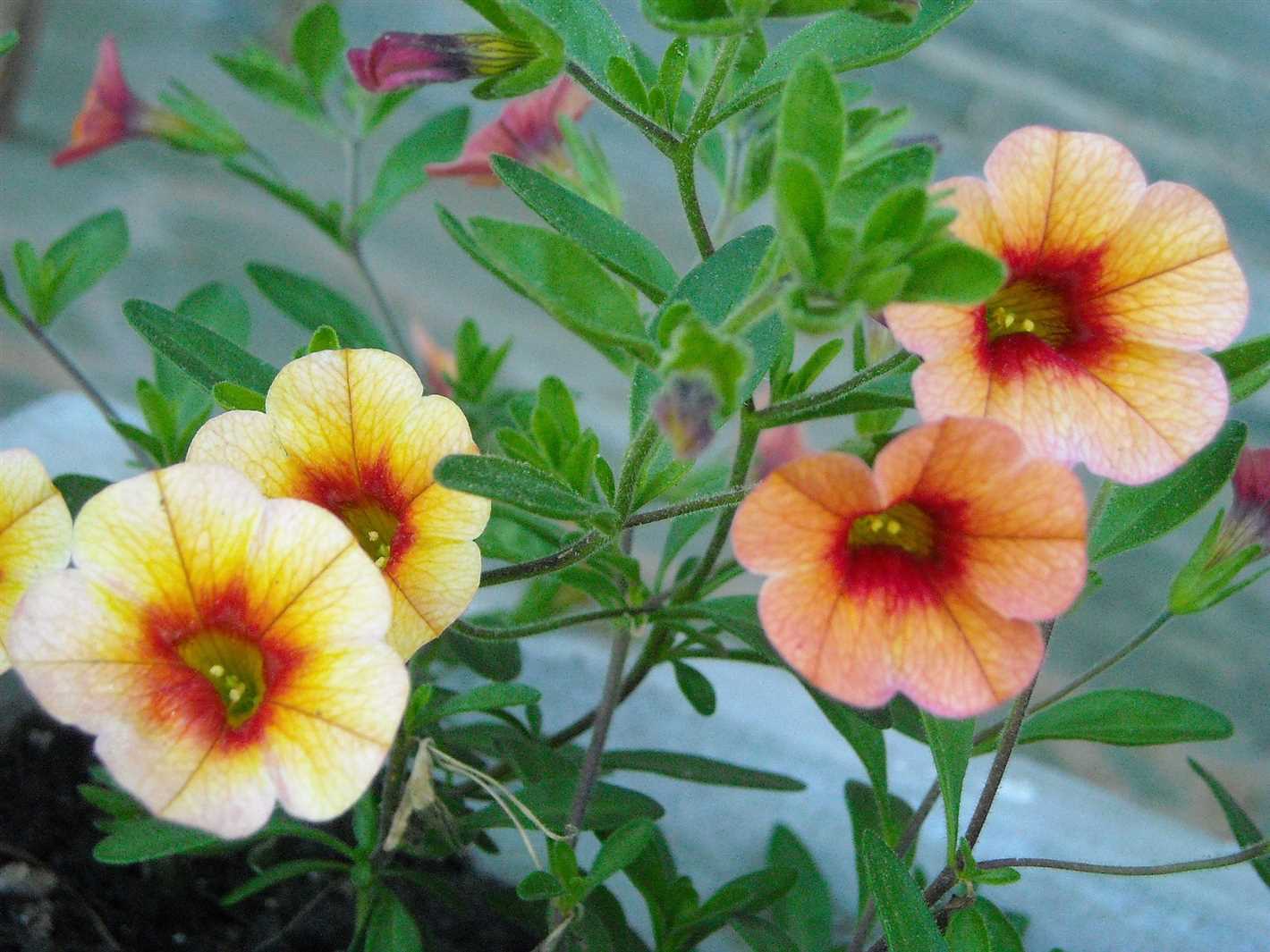
In some cases, seed treatments can be applied to improve germination rates. This may include priming (pre-soaking seeds in water), pre-chilling, or using growth-promoting substances. Seed treatment methods should be carefully chosen based on the specific needs of calibrachoa seeds.
7. Seed Viability:
Viability is the ability of seeds to germinate and produce healthy seedlings. Higher seed viability leads to better germination rates. It is important to check the viability of calibrachoa seeds before planting to ensure that you are working with viable seeds.
By considering these factors and taking appropriate measures to ensure seed quality and viability, you can increase the chances of successful germination and cultivation of calibrachoa seeds.
Seed Treatment and Pre-Sowing Techniques
Successful seed germination is crucial for the growth and development of calibrachoa plants. To improve the germination rate and ensure the overall health of the plants, several seed treatment and pre-sowing techniques can be employed. These techniques help in breaking the dormancy of the seeds, providing optimal conditions for germination, and protecting the seeds from pests and diseases.
Seed Scarification
Calibrachoa seeds have hard coats that can inhibit germination. Seed scarification is a technique used to break or weaken the seed coat, allowing moisture and oxygen to penetrate the seeds. This can be done by gently rubbing the seeds against a rough surface, such as sandpaper, or by soaking them in a solution of sulfuric acid for a short period of time. It is important to handle the seeds with care during this process to prevent damage.
Cold Stratification
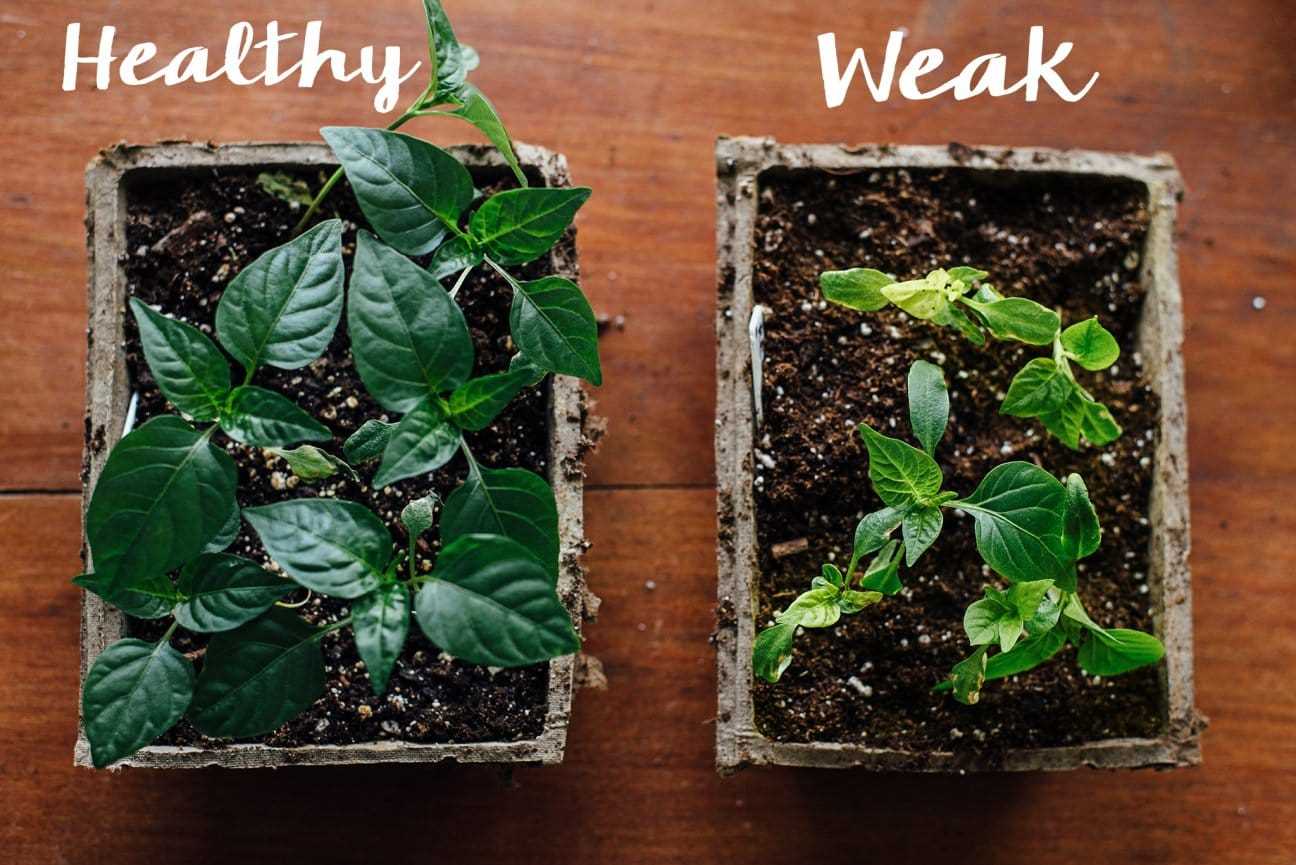
Cold stratification is a technique that simulates the natural winter conditions required by some seeds to break dormancy. Calibrachoa seeds can benefit from cold stratification, which involves subjecting the seeds to a period of cold temperatures, usually around 40-45°F (4-7°C), for a specific amount of time. This can be done by placing the seeds in a moistened paper towel or peat moss, sealing them in a plastic bag, and refrigerating them for the recommended period, typically 2-4 weeks. Cold stratification can help to synchronize germination and improve the overall germination rate.
Seed Soaking
Soaking the calibrachoa seeds in water or a seedling booster solution prior to sowing can help to hydrate the seeds and speed up the germination process. This technique is especially beneficial for seeds with hard coats or those that are slow to absorb water. The seeds can be soaked for a few hours up to overnight, depending on the seed variety. Care should be taken not to oversoak the seeds, as this can lead to fungal or bacterial growth.
Seed Priming
Seed priming is a technique that involves pre-soaking the seeds in a controlled environment to improve their germination and early seedling growth. This process can improve seed vigor and uniformity, resulting in more robust and uniform plants. The seeds are usually soaked in a solution containing water, nutrients, and sometimes growth regulators or bio-stimulants. After soaking, the seeds are dried and then sown. Seed priming can be particularly beneficial for challenging environments or when sowing in less favorable conditions.
Protective Coating
Applying a protective coating to the calibrachoa seeds can enhance seed viability and protect them from pests, diseases, and environmental stressors. This can be done by using a seed dressing or coating the seeds with a mixture of fungicides, insecticides, and nutrients. The coating can provide a barrier against pathogens, improve water uptake, and provide essential nutrients to the emerging seedlings. However, care should be taken not to apply excessive coating, as it can hinder germination or restrict root growth.
By utilizing these seed treatment and pre-sowing techniques, growers can improve the germination rate and ensure healthier and more vigorous calibrachoa plants. It is important to follow the specific instructions for each technique and to adapt them to the specific requirements of the calibrachoa seed variety being cultivated.
Pest and Disease Management
Pests
- Aphids: Aphids are common pests that can infest calibrachoa plants. They are small insects that feed on the sap of the plants, causing damage to the foliage and flowers. To control aphids, regular inspection of the plants is recommended. If infested, you can spray the plants with insecticidal soap or use a strong stream of water to wash them off.
- Spider Mites: Spider mites are tiny pests that suck the sap from the leaves, causing yellowing, bronzing, and eventually leaf drop. They can be controlled by regularly hosing down the plants with water or by using natural predators like ladybugs or predatory mites.
- Slugs and Snails: Slugs and snails can cause damage to the calibrachoa plants, especially young seedlings. To manage these pests, you can use natural repellents like coffee grounds, crushed eggshells, or diatomaceous earth. Alternatively, you can handpick them off the plants in the evening when they are more active.
Diseases
- Botrytis Blight: Botrytis blight, also known as gray mold, is a common fungal disease that affects calibrachoa plants. It causes brown spots on the leaves and flowers, which can quickly spread and cause the plant to wither. To prevent botrytis blight, ensure good air circulation around the plants, avoid overhead watering, and remove any infected plant material.
- Fusarium Wilt: Fusarium wilt is a soil-borne fungal disease that affects the roots of calibrachoa plants, causing yellowing, wilting, and eventually death. To prevent fusarium wilt, ensure proper drainage and avoid overwatering the plants. If infected, there is no cure, and the affected plants should be removed and destroyed.
- Leaf Spot: Leaf spot is a fungal disease that causes dark, circular spots on the leaves of calibrachoa plants. These spots can grow and merge, leading to leaf yellowing and drop. To manage leaf spot, avoid overhead watering, improve air circulation, and remove any infected leaves.
Integrated Pest Management (IPM)
Implementing integrated pest management practices can help control both pests and diseases in calibrachoa plants. Here are some IPM strategies to consider:
- Monitor your plants regularly for signs of pests or diseases.
- Identify the specific pest or disease and its life cycle.
- Implement cultural practices that promote plant health, such as proper watering, fertilization, and pruning.
- Use physical barriers like nets or row covers to prevent pests from accessing the plants.
- Introduce natural predators or beneficial insects that feed on the pests.
- Utilize organic insecticides or fungicides only when necessary and following the instructions carefully.
| Product | Purpose |
|---|---|
| Neem oil | Controls a wide range of insect pests and fungal diseases |
| Insecticidal soap | Kills soft-bodied insects like aphids and spider mites |
| Bacillus thuringiensis (BT) | Effective against certain caterpillars and larvae |
| Copper fungicides | Controls fungal diseases like blights and leaf spots |
Timing and Seasonality for Sowing
Calibrachoa seeds have specific timing and seasonality requirements for successful germination. It is important to understand these factors before sowing the seeds to optimize the growing conditions.
1. Ideal Sowing Time
The ideal time to sow calibrachoa seeds is in late winter or early spring, when the days start getting longer and temperatures begin to rise. This allows the seeds to benefit from increasing sunlight and warmth, which are crucial for germination.
2. Temperature Requirements
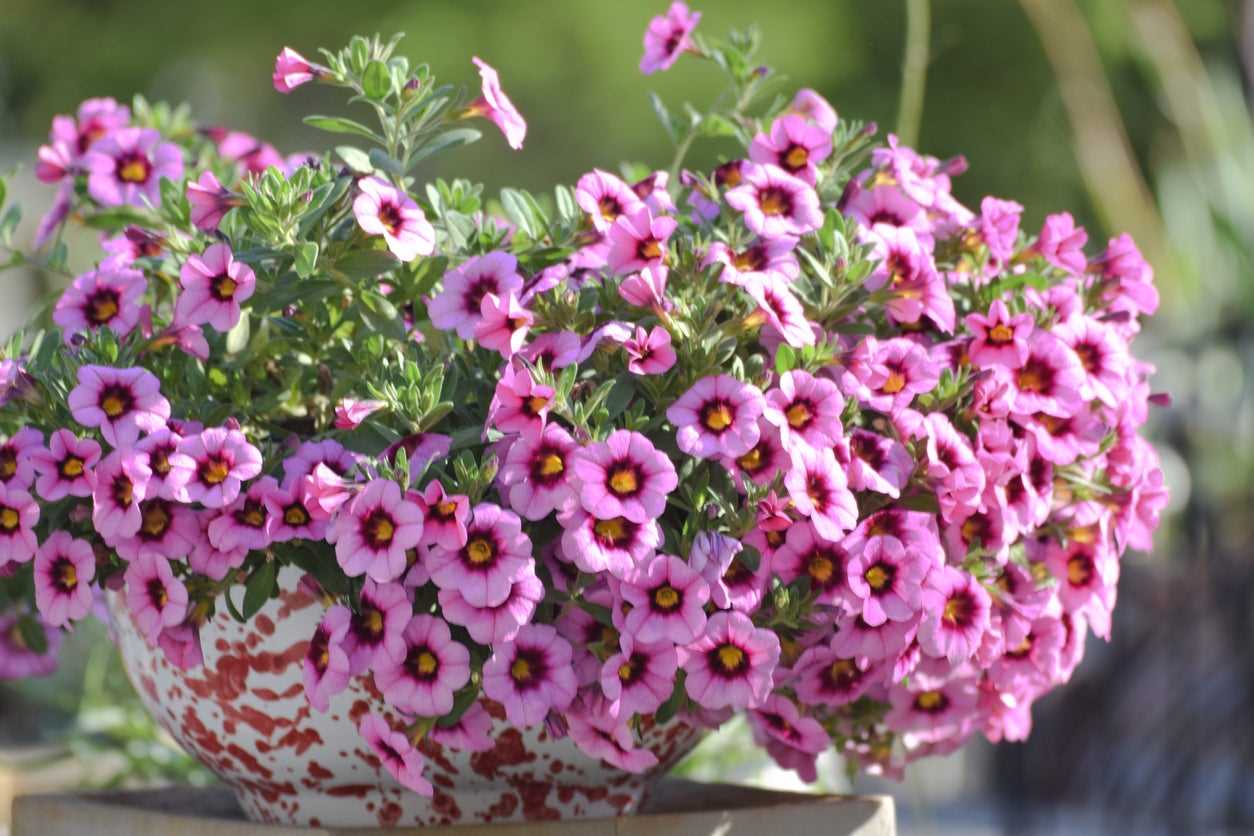
Calibrachoa seeds prefer a temperature range of 70 to 75 degrees Fahrenheit (21 to 24 degrees Celsius) for germination. It is important to provide consistently warm temperatures during the seedling stage to ensure successful growth.
3. Day Length Considerations
Calibrachoa is a photoperiodic plant, which means it is influenced by day length. Shorter days trigger blooming, while longer days promote vegetative growth. It is important to consider the day length when sowing calibrachoa seeds to align with the desired blooming period.
4. Outdoor Sowing vs. Indoor Sowing
Depending on your climate and the specific requirements of calibrachoa cultivars, you may choose to sow the seeds directly in the garden or start them indoors. Starting seeds indoors allows for better control over the growing conditions, while direct sowing outdoors can be done once the frost has passed and soil temperatures have warmed up.
5. Recommended Germination Temperature
For optimal germination, calibrachoa seeds require a consistent temperature of 68 to 75 degrees Fahrenheit (20 to 24 degrees Celsius). Using a seedling heat mat or other controlled heating methods can help provide the ideal temperature for successful germination.
| Timing and Seasonality | Ideal Conditions |
|---|---|
| Sowing Time | Late winter or early spring |
| Temperature | 70 to 75 degrees Fahrenheit (21 to 24 degrees Celsius) |
| Day Length | Consider the desired blooming period |
| Outdoor vs. Indoor Sowing | Depends on climate and cultivar requirements |
| Recommended Germination Temperature | 68 to 75 degrees Fahrenheit (20 to 24 degrees Celsius) |
By considering the timing and seasonality for sowing calibrachoa seeds, you can increase the chances of successful germination and ensure optimal growth conditions for these beautiful flowering plants.
Questions and Answers:
What is calibrachoa? How do the seeds germinate?
Calibrachoa is a plant species that belongs to the Solanaceae family. The seeds of calibrachoa usually germinate when exposed to light. They require temperatures between 70 and 75 degrees Fahrenheit for successful germination.
Can calibrachoa seeds germinate in darkness?
No, calibrachoa seeds require exposure to light in order to germinate. Keeping them in darkness will hinder their germination process.
What is the ideal temperature for calibrachoa seed germination?
The ideal temperature for calibrachoa seed germination is between 70 and 75 degrees Fahrenheit. This temperature range provides optimal conditions for the seeds to sprout and develop into seedlings.
How long does it take for calibrachoa seeds to germinate?
The germination time for calibrachoa seeds can vary, but it usually takes around 10 to 14 days for the seeds to sprout. However, some seeds may take longer to germinate, so patience is required when growing calibrachoa from seeds.
What are the common factors that affect calibrachoa seed germination?
There are several factors that can affect calibrachoa seed germination. Some of the common factors include exposure to light, temperature, soil moisture, and seed quality. Providing the right conditions for these factors will greatly increase the chances of successful germination.







